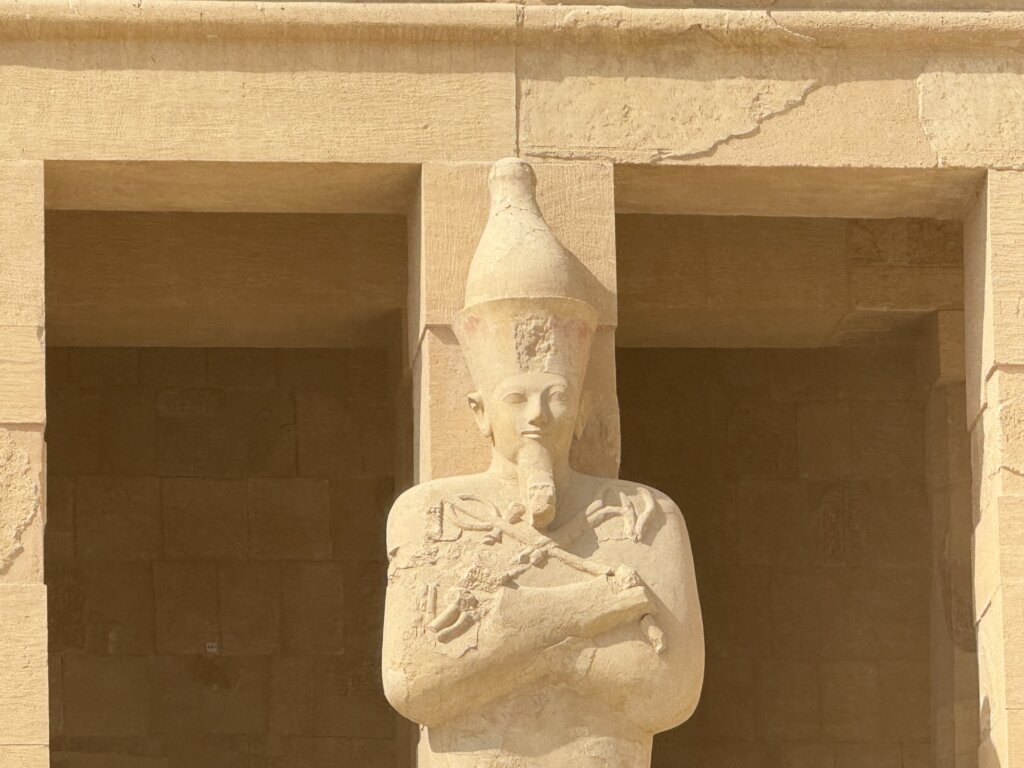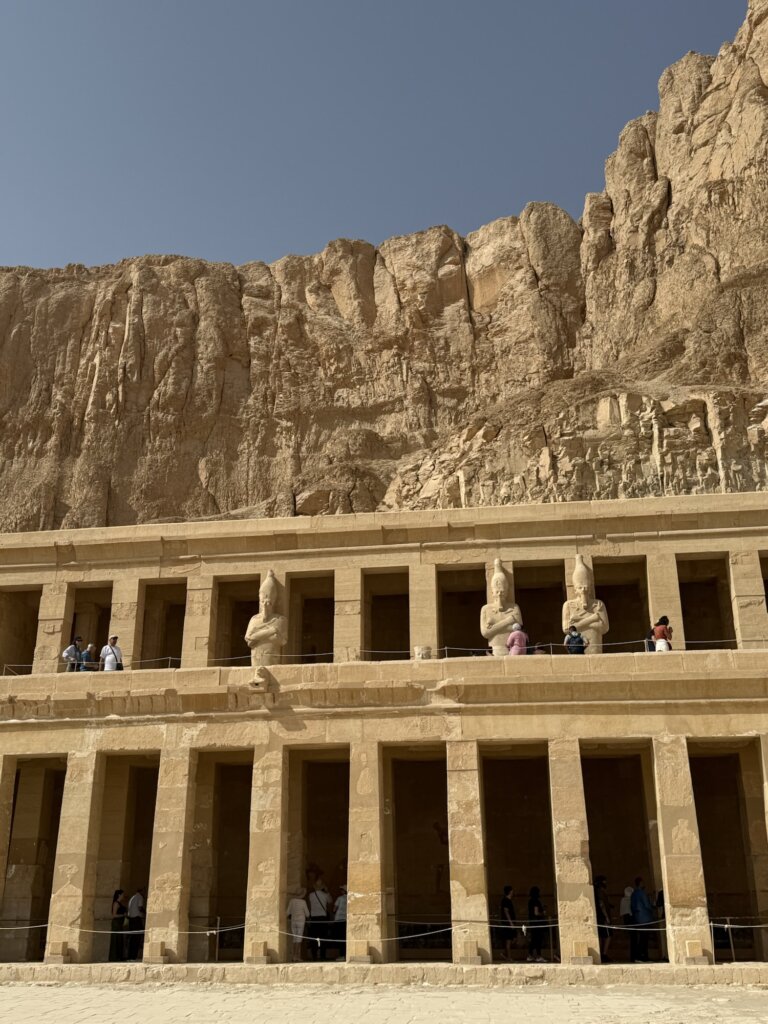The Temple of Hatshepsut, nestled at Deir el-Bahari on الأقصر’s west bank, stands as one of Egypt’s most striking monuments from the Eighteenth Dynasty. Built around 1479 BCE, the temple was commissioned by Hatshepsut herself, with construction lasting about fifteen years under the direction of her architect and close advisor, Senenmut. Its design drew inspiration from the neighbouring temple of Mentuhotep II, yet surpassed it in scale, ambition, and artistry, showcasing a series of terraced platforms, long ramps, and harmonious colonnades carved into the dramatic cliffs.



Distinct among mortuary temples, Hatshepsut’s structure was conceived not only to honour the gods and support funerary rites, but also to immortalise the achievements of a rare female pharaoh. The temple’s reliefs and inscriptions present stories from her reign, most notably her celebrated expedition to Punt, which was a triumph of diplomacy and trade. Its symmetry and proportions are quintessentially Egyptian, but the monumental size and the vivid narrative art make it an unrivalled testament to the ingenuity of ancient craftsmanship.
Hatshepsut herself is a figure of enduring fascination in Egyptian history. Rising from queen consort to regent and finally ruling as pharaoh, she seized power in a society fundamentally organised around male kingship. Her reign was marked by peace, prosperity, and ambitious building programmes, which included not only her mortuary temple but also numerous other public works. She claimed divine birth, presenting herself as the chosen of Amun, thus reshaping her image in artworks and official proclamations so she could rule with undisputed authority.
After Hatshepsut’s death, her successor Thutmose III attempted to erase her legacy by defacing statues and inscriptions, but her achievements and the monument itself endured through the centuries. Today, the Temple of Hatshepsut stands as a celebration of female leadership and innovation, its remarkable architecture drawing visitors from across the globe who marvel at its function as both a sanctuary for the deities and an everlasting celebration of a powerful woman who transcended the limitations of her age.
Temple of Hatschepsut
الأقصر
Egypt
Loading map...


